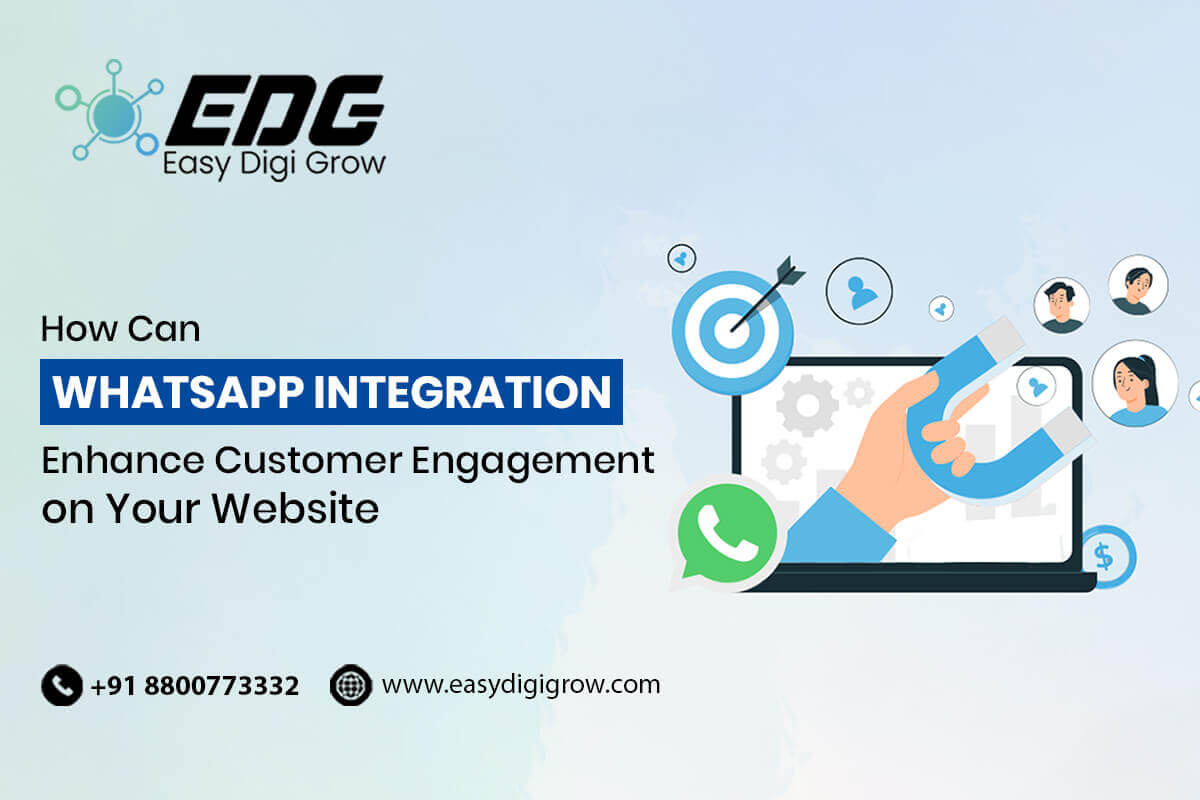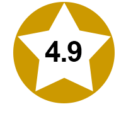Customer interaction has been one of the essential factors for successful businesses over the years. Currently, with increased dependence on digital media, one needs to be responsive to the communication behavior of their target audience. Since more than 2 billion people use WhatsApp, business organizations cannot afford to be oblivious to this platform. WhatsApp Integration into your website makes it easier and more direct for clients as it enhances ease, accessibility, and efficiency.
This blog explores the importance of WhatsApp integration, its various types, and step-by-step instructions for implementation. Whether you’re a small business or a large enterprise, this guide will help you unlock the full potential of WhatsApp for customer engagement.
WhatsApp Integration: An Overview
WhatsApp integration allows businesses to use the platform’s communication features directly from their websites or systems. This integration could improve customer service, expedite communication, and increase overall engagement. Several kinds of WhatsApp integration can be explored now.
WhatsApp Chatbot
A WhatsApp chatbot is an automated tool that chats with clients using pre-programmed responses. It is especially useful for answering common questions such as product availability, company hours, and order status. Businesses use chatbots to deliver 24-hour customer care without requiring continual human interaction.
WhatsApp Chat Integration
WhatsApp chat integration enables you to add a chat button on your website, thereby enabling users to send messages in real time to your team. Such a feature enables clients to automatically contact you in the event of problems, complaints, or feedback. It’s simple yet highly effective for improving customer satisfaction.
Integration with Business Tools
Integrate WhatsApp with your CRM or email marketing to help manage customer contacts. For example, connecting WhatsApp and your CRM allows you to track chats, categorize clients, and build targeted ads.
WhatsApp API Integration
The WhatsApp Business API provides extensive integration options such as automation, bulk messaging, and multi-agent support. It’s perfect for growing organizations that need stronger communication capabilities.
Why Integrate WhatsApp?
If you are unsure why you should integrate WhatsApp, here are some reasons to assist you decide.
Boosted Client Interactions
WhatsApp is one of the most personal and widely used communication platforms. By integrating it into your website, you create a direct line for open dialogue, fostering trust and strengthening customer relationships.
Instant, Accessible Support
Customers need speedy responses, and WhatsApp integration enables businesses to meet these expectations. Instant messaging systems guarantee that queries are answered in real-time, offering you a considerable advantage in competitive marketplaces.
Tailored Customer Experiences
Personalization is critical to client loyalty. WhatsApp allows you to personalize messages, address clients by name, and offer tailored solutions based on previous interactions.
Effortless Transactional Communication
Order updates, payment confirmations, and delivery notifications are critical to consumer convenience. Sending these updates via WhatsApp is not only faster, but it also ensures that clients receive all of the necessary information without having to check in on several platforms.
Enhanced Marketing and Sales Potential
WhatsApp may be an efficient marketing tool for a variety of purposes, including communicating special offers and coordinating promotional campaigns. Businesses may quickly reach and engage their target consumers using tools such as broadcast lists and multimedia sharing.
How to Integrate WhatsApp with Your Business?
Here’s a quick approach to integrating WhatsApp into your business so you don’t feel like a newbie.
Steps to Integrate WhatsApp into Your Business
- Establish a WhatsApp Business Account: Begin by creating a professional WhatsApp Business Account (details below).
- Create a WhatsApp link: Create a custom link using the “Click to Chat” option that takes customers directly to your WhatsApp.
- Embed a WhatsApp button on your website: Add the link to your website to make it easy for customers to connect with you.
- Use Third-Party Tools: Platforms like Tidio or HubSpot provide widgets that simplify the integration process.
- Leverage the WhatsApp Business API: For more advanced features like automated workflows and analytics, integrate the API.
Different Ways of Integrating WhatsApp
Depending on your needs, you can integrate WhatsApp into your business in different ways. Here are some common ways businesses use WhatsApp integration:
- Manual HTML Integration: Add a simple line of HTML code to your website to create a WhatsApp chat button.
- Plugins and widgets: Use tools like WhatsHelp or Chaty for easy drag-and-drop integration.
- API Solution: Customize the integration with the WhatsApp Business API for more complicated requirements.
WhatsApp Business Account Setup
Steps to Create a WhatsApp Business Account
- Simply download the app: It’s available on both Google Play and the Apple App Store.
- Register Your Business Number: Use a dedicated phone number for professional communication.
- Create Your Business Profile: Add your company name, logo, address, email, and website URL to build trust with customers.
- Set Up Quick Replies: Save time by creating preset responses for common queries like “What are your working hours?”
- Enable Catalogs: Showcase your products or services directly on WhatsApp to simplify the buying process for customers.
WhatsApp Chatbots: An Overview
Benefits of WhatsApp Chatbots
- 24/7 Availability: Chatbots ensure that client inquiries are answered quickly, even outside of work hours.
- Cost-effectiveness: Automating responses eliminates the requirement for a large number of customer service personnel.
- Scalability: Chatbots can handle thousands of interactions simultaneously, making them ideal for growing businesses.
Integration Process for WhatsApp Chatbots
- Select a Chatbot Provider: Choose systems like Twilio, WATI, or Chatfuel.
- Connect to the WhatsApp API: Connect the chatbot to your WhatsApp business API.
- Train the bot: Create responses to regular requests and test their functionality.
- Deploy on Website: Embed the chatbot on your website to start interacting with customers.
The WhatsApp API Integration
Benefits of WhatsApp API
- Multi-Agent Support: Multiple team members can manage a single WhatsApp account, improving efficiency.
- Automation: Automate messaging, order confirmations, and follow-ups.
- Bulk Messaging: Distribute updates or promotional messages to several clients at once.
- Analytics and insights: Metrics can help you better understand customer behavior and optimize your strategies.
Integration Process for WhatsApp API
- Apply for Access: Partner with verified providers like Twilio, 360Dialog, or Meta Business Partners to gain API access.
- Setup and configuration: Customize your API options including message templates and notification types.
- CRM or Tool Integration: Improve communication and data management by using tools such as Zapier or HubSpot.
- Test and Go Live: Before launching ensure that all features are functional.
Conclusion
Integrating WhatsApp into your website can change the way you communicate with clients. WhatsApp, whether through chatbots, direct messaging, or API-driven solutions, provides a powerful and user-friendly platform for satisfying client expectations.
Businesses can use its features to enhance customer service, boost marketing efforts, and simplify communication. Begin integrating WhatsApp immediately to keep ahead of the competition and strengthen ties with your audience.
Ready to increase customer engagement? Begin integrating WhatsApp into your website and discover limitless growth opportunities!
 seolounge
seolounge



